#temple of jerusalem
Explore tagged Tumblr posts
Text

The Triumphal Procession of Titus and Vespasian in Rome, with the Spoils of Jerusalem, AD 71 — by Peter Connolly
#peter connolly#art#ancient rome#titus#vespasian#triumph#triumphal#procession#roman#romans#spoils#roman empire#treasure#plunder#loot#jerusalem#judea#history#antiquity#jewish#siege of jerusalem#menorah#architecture#artifacts#temple of jerusalem#herod's temple#europe#european#roman triumph#triumphal procession
268 notes
·
View notes
Text
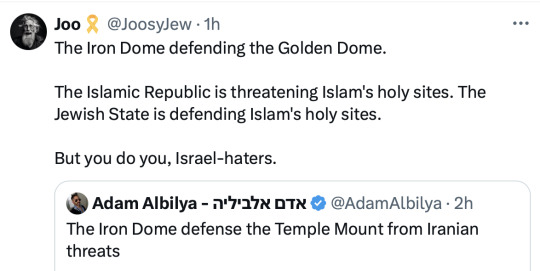
362 notes
·
View notes
Text
Pictures for those with limited education & reading comprehension.

#israel#secular-jew#jewish#judaism#israeli#jerusalem#diaspora#secular jew#secularjew#islam#islamic jihad#al asqa#Islamic imperialism#Islamic colonialism#colonialism#colonialism in pictures#never again#no ceasefire#bring them home#hostages#Gaza#hamas war crimes#temple mount
184 notes
·
View notes
Text

114 notes
·
View notes
Text

Christ and St Mary Magdalen at the Tomb
Artist: Rembrandt van Rijn (Dutch, 1606-1669)
Date: 1638
Medium: Oil on Panel
Collection: Royal Collection Trust, United Kingdom
Description
Christ and St Mary Magdalene at the Tomb reveals how imaginatively Rembrandt could interpret traditional religious subject-matter. The scriptural source for this scene is the Gospel of St John (20:11-18), who describes in some detail the burial and subsequent resurrection of Christ following the Crucifixion. Mary Magdalene returns to the tomb early the next morning, only to find the stone at the entrance removed and two angels inside it where the body should have been. She then fetches two of the disciples, who check that the tomb is empty and then leave her. The angels then ask Mary Magdalene, ‘Woman, why weepest thou?’ and she replies, ‘Because they have taken away my Lord, and I know not where they have laid him.’ At that moment she turns round and sees a man dressed as a gardener, not appreciating that he is the resurrected Christ. She appeals to him for information, but he calls her by her name and she instantly recognises him. (‘Jesus saith unto her, Mary. She turned herself, and saith unto him, Rabboni; which is to say master.’) Rembrandt has depicted the moment of realisation just before the actual recognition. Most artists chose to paint the next moment in the text, when Mary Magdalene reaches out towards Jesus and he forestalls her with the words ‘Touch me not’ (in Latin, Noli me tangere).
Rembrandt skilfully evokes the dawn as the opalescent light picks out from the darkness the towers of the Temple of Jerusalem, the upper half of the figure of Christ, the face of Mary Magdalene, and the outline of one of the angels in the tomb. This use of light is almost symbolic in both the physical and the spiritual senses. The paint is in general thinly applied and, apart from the treatment of the light and the vegetation around the tomb referring to Christ’s activities as a gardener, could almost be described as monochrome. It is only after a time that the eye focuses on the two female figures (the Gospels of St Mark and St Luke refer to three Maries at the tomb) in the middle distance on the left descending the hill.
Of particular note is the positioning of Christ, who in the relationship established between his partially silhouetted vertical form and the Temple of Jerusalem behind and the rocky cave next to him dominates the composition, whereas the twisting pose of Mary Magdalene is the pivot. The tension created between Christ’s standing figure and the twisting kneeling Mary Magdalene is palpable. The artist’s only other treatment of the subject of Christ and Mary Magdalene is in Brunswick (Herzog Anton Ulrich Museum): it is dated 1651 and is totally different in composition.
#oil on panel#rembrant van rijn#christ#mary magdalene#angels#tomb#christianity#holy bible#gospel of john#bible scene#biblical#dutch painter#landscape#temple#jerusalem#architecture#foliage#17th century painting#european art
60 notes
·
View notes
Text

'Exquisite' 1,700-Year-Old Lamp Bearing Temple Symbols Discovered in Jerusalem
"The exquisite artistic workmanship of the lamp, which was found complete, makes it outstanding and extremely rare."
A rare ceramic oil lamp dated to the late Roman period that bears images of items used in the Second Temple was discovered in Jerusalem, the Israel Antiquities Authority announced on Thursday.
"After the Roman emperor Hadrian suppressed the Bar Kochba rebellion in 135 CE, Jews were expelled from the city. The Mount of Olives lamp is one of the few material traces of a Jewish presence around Jerusalem in the 3rd-5th centuries CE," said Michael Chernin, excavation director on behalf of the Antiquities Authority.
The Antiquities Authority explained that the lamp was a "unique find" and that, judging by the soot marks on its nozzle, it was used about 1,700 years ago.
The Temple symbols that decorate the lamp include a depiction of the menorah used in the Second Temple, an incense shovel, and lulav (date palm branch used in Jewish ritual).
"The exquisite artistic workmanship of the lamp, which was found complete, makes it outstanding and extremely rare,” said Chernin.
Chernin also explained that the symbols on the lamp, which connected them to the Temple, were "particularly surprising" because there has been "very little evidence of the existence of a Jewish settlement in and around Jerusalem from this period."
Israel Antiquities Authority research archaeologist Benjamin Storchan said the lamp belongs to "the 'Beit Nattif' type, named after a production workshop identified in the 1930s near Bet Shemesh."

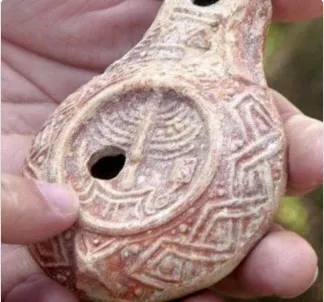
'Exceedingly rare' find
He explained that "oil lamps with menorah decorations are exceedingly rare, and only a few similar Beit Nattif-type lamps can be found in the National Treasures archive. The choice of symbols on the lamp is not accidental. This is a fascinating testimony connecting everyday objects and faiths among ancient Jerusalem’s inhabitants. It seems that the lamp belonged to a Jew, who purchased it because of its religious affiliation and memorial to the Temple.”
"It is evident that the lamp maker dedicated a great deal of time and effort to its decoration," Storchan added.
He then continued to elaborate on how the lamp was made, saying the maker "delicately and intricately carved limestone molds using drills and chisels."


"The molds were made in two parts (upper and lower). To create the lamp, the potter pressed the clay into the molds and then pressed them together. Finally, the vessel was fired, and it could be used. This method of producing lamps in molds allowed for refined designs, as well as the addition of delicate and intricate decorations," Storchan continued.
Heritage Minister Rabbi Amichai Eliyahu remarked on the correlation between the time of the finding and the Jewish holiday of Hanukkah.
"This unique oil lamp, which in an exciting manner bears the symbols of the Temple, connects the lights of the past with the Hannukah holiday of today and expresses the deep and long-standing connection of the nation of Israel to its heritage and to the Temple’s memory.”
Rabbi Eliyahu also stated that the lamp would be revealed to the public for the first time during Hannukah "alongside stone molds used to make ceramic lamps."
#'Exquisite' 1700-Year-Old Lamp Bearing Temple Symbols Discovered in Jerusalem#The Mount of Olives#ancient oil lamp#ancient artifacts#archeology#archeolgst#history#history news#ancient history#ancient culture#ancient civilizations#ancient israel#ancient art
39 notes
·
View notes
Text



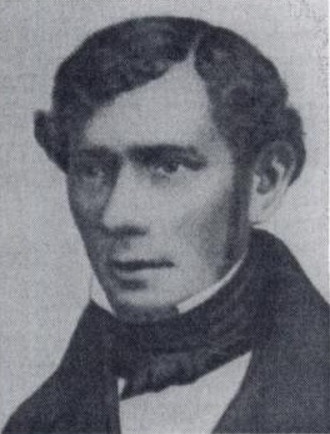



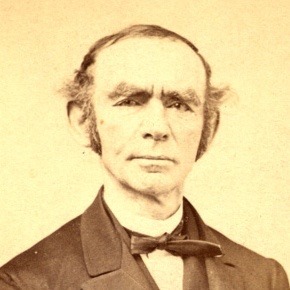
These are four portraits/caricatures I did, back in May and June, of four key figures in the founding of the Reform Jewish movement.
Two of them are from Germany (Geiger and Holdheim) and two of them are from the USA (Mayer-Wise and Einhorn). Reform has its roots in the German enlightenment era, when the German government sought to grant Jews equal rights, and largely succeeded for a time. One of the products of what would come to be known as “The Emancipation” was the birth of a new class of Jewish intellectual, coming out of the darkness of the ghetto and into the enlightenment era, many Jews felt that their tradition was becoming quite archaic and outdated, and sought to update their practices to better fit into the changing world.
However, some of the decisions made by early reformers, particularly the more radical subset, greatly disturbed the more traditionally-minded. Radical early reformers were very concerned with assimilation over the more multicultural inclusion mindset that the movement is known for today, in the beginning a lot of Reform Temples felt more like Christian Churches because they had removed so much that made the Jewish people so distinct from the Christian majority that surrounded them. No head coverings, no tallit, no davening, no Hebrew, it was all in an effort to further emancipate Jewish people into mainstream goyish culture, it seems as though for a lot of radical reformers the key to stopping antisemitism for good was to simply stop being so unique.
This led to a lot of tensions within the growing movement, and it all came to a head in the USA after the infamous Trefa Banquet, where almost every dish served violated Kosher law, several Rabbis walked out, and thus the Conservative movement was born.
As for Reform itself, many Ashkenazi reformers ended up in the USA (Such as Isaac Mayer-Wise), they saw in the growing nation a world devoid of the centuries-old, set-in-stone Jewish law that largely held them back in Europe. Today, Reform Judaism holds its largest communities in the USA and parts of Canada, though there are remaining pockets all around the world. And as for their more assimilationist policies, Reform has largely revoked much of their previous bans in favour of a more personalized and optional approach, many Reform Temples have racks of tallit for those who wish to use them, give the option of head-covering such as kippahs to all regardless of gender, and most Temples recite their prayers in Hebrew, and sometimes the dominant language of the region. In the modern time, Reform Judaism largely prioritizes the individual journeys of its adherence, rather than on telling people what to think and feel (In most cases there are limits of course).
There is also the issue of Zionism, which I will touch upon briefly before ending this post: Early Reform Jews were very strictly anti-Zionist. Abraham Geiger, for example, removed the prayers for the return to Zion completely from his services. This was because of, again, The Emancipation. The Reform Jews in their respective countries firmly believed that Jews were equal citizens of their countries and for a group of people from one country, who insist that they are part of that country, to pray every Friday/Sunday for a mass exodus and return to another nation, well that doesn’t seem very “Patriotic” as it were, does it? And so the Jewish Reformers of old declared that they were no longer a nation, but instead a religious group, completely denouncing the wish of returning to Zion. And so it was, but unfortunately, this decree would not survive the Holocaust, when the world that the early Reformers so strongly desired to be a part of changed irreversibly or, in some cases, ceased existence entirely. It is, in my opinion, one of the many great tragedies of the 20th century.
Sorry it got a bit sad at the end there, I hope you enjoyed learning a bit about Reform Judaism with me today. That will be all, be well.
#art#jewish#judaism#jumblr#history#19th century#also fun fact#Temples are called Temples in Reform and not Synagogues#This is actually a holdover from the anti-Zionist days#As a symbolic gesture to the fact that reformers had abandoned the desire#To rebuild a third Temple in Jerusalem#sketch#caricature
25 notes
·
View notes
Text

Tisha B'Av: A Day of Mourning and Reflection
Tonight marks the eve of Tisha B'Av (תשעה באב), and tomorrow, we observe the most solemn day in the Jewish calendar.
Tisha B'Av, the 9th day of the Hebrew month of Av, commemorates the destruction of both the First and Second Temples in Jerusalem—catastrophic events that led to exile and immense suffering.
The First Temple was destroyed by the Babylonians in 586 BCE, and the Second Temple by the Romans in 70 CE.
These tragedies are not merely historical events; they represent profound spiritual turning points that have shaped the course of Jewish history.
But Tisha B'Av is more than a day of mourning; it's a time for deep introspection and connection to our past.
Traditional observances include fasting for 25 hours, refraining from pleasurable activities, and reading the Book of Lamentations (איכה), which poetically laments the destruction of Jerusalem.
The atmosphere is one of solemnity as we remember the loss of the Temples and the countless other tragedies associated with this day, such as the expulsion of Jews from Spain in 1492 and the start of World War I, which brought immense suffering to the Jewish people.
Tisha B'Av is a powerful reminder of the enduring connection between the Jewish people, the Hebrew language, and the land of Israel.
It underscores the resilience of a people who, despite repeated devastations, have maintained their faith, culture, and identity through the centuries.
This day also calls us to reflect on the current state of the world, the importance of unity, and the hope for a future of peace and rebuilding.
While Tisha B'Av is a day of sorrow, it also carries the seeds of hope.
Jewish tradition teaches that the Messiah will be born on Tisha B'Av, transforming the day of mourning into a day of joy.
This duality—the deep sorrow for what has been lost, combined with hope for redemption—is at the heart of the day’s significance.
14 notes
·
View notes
Text
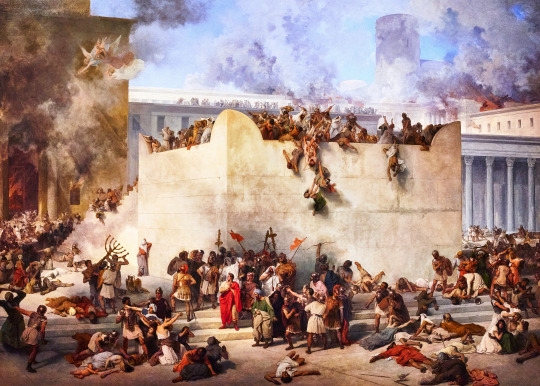
Francesco Hayez (Italian, 1791-1882) The Destruction of the Temple of Jerusalem, 1867 Dorsoduro, Venice, Veneto Tisha B'Av (lit. 'the ninth of Av') is an annual fast day in Judaism, on which a number of disasters in Jewish history occurred, primarily the destruction of both Solomon's Temple by the Neo-Babylonian Empire and the Second Temple by the Roman Empire in Jerusalem.
#coming up this year from 26th-28th of July#francesco hayez#hayez#italian#italy#mediterranean#europe#southern europe#the cradle of civilization#cradle of civilization#Tisha B'Av#1700s#1800s#the ninth of av#tisha b'av#art#classical art#european art#europa#the destruction of the temple of Jerusalem#oil painting#painting#art history#historical art#history#the Bible
116 notes
·
View notes
Text
Something needs to be done about the red heifers!
youtube
I believe that I don’t have to explain why this sacrifice can’t come to pass. If you don’t know, fanatical religious groups are planning to tear down the Al aqsa mosque after killing a red cow and that mosque is not only sacred to Muslim countries but also Muslims over the world!
This awful ritual must be stopped or else, WORLD WAR III! If we can prevent the cow from being slaughtered then they can’t destroy Al aqsa. There is a link to a petition to save the cows in the video. Sign it if you’re able to.
#palestine#free palestine#free gaza#gaza#israel#jerusalem#red heifer#benjamin netanyahu#Temple institute#israeli army#israel is a terrorist state#israel is committing genocide#israel is evil#isreal#stop israel#from river to sea palestine will be free#from the river to the sea#from the river to the sea palestine will be free#al aqsa mosque#april 2024#Youtube
22 notes
·
View notes
Text

The Visit of the Queen of Sheba to King Solomon by Edward John Poynter
#edward john poynter#edward poynter#art#queen sheba#king solomon#solomon#biblical art#bible#architecture#temple#solomon's temple#israelites#israelite#jewish#history#jerusalem#israel#christianity#christian#old testament#asia#hebrew#judaism#arabia#arabian#columns#monkeys#birds#lions#monkey
245 notes
·
View notes
Text


Zionists built their temple underneath the Al Aqsa mosque, it’s really not that hard to understand.
45 notes
·
View notes
Text

What location should the "occupation mosque" be relocated to?
#israel#secular-jew#jewish#judaism#israeli#jerusalem#diaspora#secular jew#secularjew#islam#temple mount#al asqa mosque#Al asqa#al asqa brigades#mosque#mosques#move the mosque#occupation#occupiers#Islam is the occupier#decolonize Islam#decolonize
141 notes
·
View notes
Text















Source
#jerusalem#jews#judaism#stolen story of jews and jerusalem#highjacking history#temple mount#jewish quarter#history
58 notes
·
View notes
Text

The Angel Appearing to Zacharias
Artist: William Blake (British, 1757–1827)
Date: 1799–1800
Medium: Pen and black ink, tempera, and glue size on canvas
Collection: Metropolitan Museum of Art, New York City, NY, United States
Description
Blake devoted much of the year 1799–1800 to fifty biblical scenes drawn, a commission he received from his principal patron, the government clerk Thomas Butts. About thirty of these works have been identified; it is thought that some have not survived owing to the fragility of the materials. This scene illustrates verses from Luke I:11–13, in which the archangel Gabriel appears to the righteous Zacharias, a high priest of the Jewish Temple in Jerusalem, to announce that Zacharias’s elderly and barren wife will give birth to a son, Saint John the Baptist.
#biblical scene#biblical art#artwork#painting#fine art#pen-black ink-tempera#gospel of luke#archangel gabriel#zacharias#high priest#jewish temple#jerusalem#prophecy#candelabra#art and the bible#christianity#british culture#british art#william blake#british painter#european art#18th century painting#metropolitan museum of art
42 notes
·
View notes
Text

‘Extremely Rare’ Ancient Stone Seal Discovered in Jerusalem
An "extremely rare and unusual" ancient stone artifact-thought to be around 2,700 years old-has been discovered in Jerusalem.
The artifact in question, a seal made of black stone, was uncovered during an excavation conducted by the Israel Antiquities Authority and the City of David organization near the Southern Wall of the Temple Mount (also known as Al-Aqsa)-a site in Jerusalem's Old City that is considered holy by Jewish people, Muslims and Christians.
The stone seal bears a name inscribed in the paleo-Hebrew script, as well as an image of a winged figure. It is thought to have been used both as an amulet and as a stamp to seal documents, Filip Vukosavović, a senior field archaeologist with the Israel Antiquities Authority (IAA), told Newsweek.
"The seal is one of the most beautiful ever discovered in excavations in ancient Jerusalem, and is executed at the highest artistic level," Yuval Baruch and Navot Rom, excavation directors on behalf of the IAA, said in a press release.
The seal has a hole drilled through it lengthwise so that it could be strung onto a chain and hung around the neck. In the center, a figure with wings is depicted in profile, wearing a long, striped shirt and striding toward the right. The figure has a mane of long curls covering the nape of the neck, and on its head sits a hat or a crown.
The figure is raising one arm upward with an open palm, perhaps indicating that it is holding some kind of object.
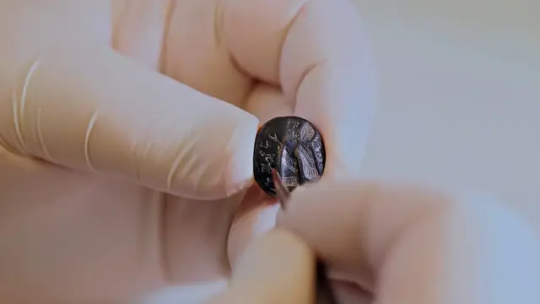




Depictions of winged figures such as these are known in neo-Assyrian art of the 9th-7th centuries B.C. and were considered a kind of protective magical figure, according to Vukosavović. The artifact, thus, demonstrates the influence of the Assyrian Empire-a major civilization of the ancient Near East that had conquered the Israelite Kingdom of Judah, including its capital Jerusalem.
"This is an extremely rare and unusual discovery. This is the first time that a winged 'genie'– a protective magical figure-has been found in Israeli and regional archaeology," Vukosavović said in an IAA press release.
On both sides of the figure, an inscription is engraved in paleo-Hebrew script. In English script, this inscription translates as: "Le Yehoʼezer ben Hoshʼayahu."
"[Yehoʼezer] was a common name," Ronny Reich, a researcher from the University of Haifa said.
The researchers believe that the stone object was originally worn as an amulet around the neck of a man called Hoshʼayahu, who held a senior position in the administration of the Kingdom of Judah. He may have worn the object as a symbol of his authority. "It seems that the object was made by a local craftsman-a Judahite, who produced the amulet at the owner's request. It was prepared at a very high artistic level," Vukosavović said in the press release.
The working hypothesis of the experts is that upon Hoshʼayahu's death, his son, Yehoʼezer, inherited the seal, and then added both of their names on either side of the figure. The names were added in negative, or mirror, script-so that the impression would appear in positive and be legible-according to Reich.
"The combination of figure and script, and particularly a neo-Assyrian figure is uncommon in Judah," Reich said.
By ARISTOS GEORGIOU.



#‘Extremely Rare’ Ancient Stone Seal Discovered in Jerusalem#Southern Wall of the Temple Mount#Al-Aqsa#Jerusalem's Old City#winged 'genie'#amulet#seal#ancient artifacts#archeology#archeolgst#history#history news#ancient history#ancient culture#ancient civilizations#ancient israel#israeli history#ancient art#art history
56 notes
·
View notes